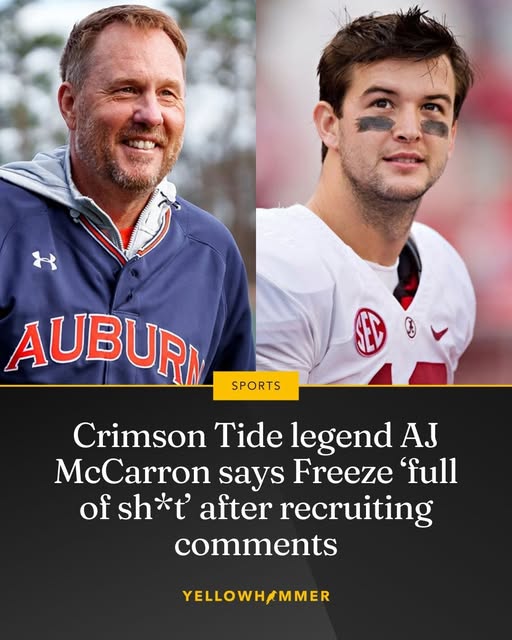The rivalry between the Alabama Crimson Tide and the Auburn Tigers, commonly known as the Iron Bowl, is far more than just a football game. It’s a cultural phenomenon that grips the entire state of Alabama and spills far beyond its borders into the national consciousness. The magnitude of this rivalry transcends the sport itself. It’s deeply rooted in history, community identity, family dynamics, and Southern tradition. It is arguably the most iconic rivalry in the Southeastern Conference (SEC) and possibly in all of college football, a fierce contest that ignites passion, pride, and sometimes heartbreak on both sides.
The Iron Bowl isn’t just a contest between two programs vying for superiority on the football field. It represents a clash between two dominant powerhouses who are often national contenders. Their face-offs have, time and again, determined SEC championships, national title implications, and Heisman Trophy legacies. For Alabama and Auburn fans, it’s a date circled on the calendar with thick red ink, one that means bragging rights for a full year and often dictates the trajectory of entire seasons. But to understand the full intensity and significance of this rivalry, one must look back at its storied origins, its moments of infamy and glory, and the cultural and emotional weight it carries for players, coaches, and fans alike.
The roots of the Iron Bowl date back to February 22, 1893, when Auburn and Alabama first met on a gridiron in Birmingham. The game ended in a 32-22 Auburn victory, but no one could have predicted the animosity and tradition that would blossom from that one event. The game was originally played in Birmingham, which was the most neutral major city between Tuscaloosa and Auburn. As the rivalry evolved, so did the geography, and now the games alternate between Jordan-Hare Stadium in Auburn and Bryant-Denny Stadium in Tuscaloosa. This alternating venue format only intensified the home-field fervor and localized the passion that pours into the Iron Bowl.
The rivalry has not been without its complications. In fact, the game was not played between 1907 and 1948 due to disagreements between the schools over issues ranging from per diems for players to officiating. That hiatus didn’t cool tensions; it merely built them up. When the rivalry was renewed in 1948, it was like reopening a wound that never fully healed. Alabama won that match 55-0, a lopsided victory that only fanned the flames of Auburn’s resentment and determination. From that point forward, the Iron Bowl became an annual event that transcended sports and became part of the cultural fabric of Alabama.
Over the decades, the Iron Bowl has produced moments that remain etched in college football history. There’s the 1982 game known as “Bo Over the Top,” when Auburn’s Bo Jackson leaped over the Alabama defensive line to score the game-winning touchdown and snap a nine-year Alabama win streak. That moment wasn’t just a football play—it was a cultural exclamation point for Auburn fans who had long lived in the shadow of Alabama’s dominance. Or consider the 2013 “Kick Six” game, perhaps the most iconic moment in Iron Bowl history, when Auburn’s Chris Davis returned a missed Alabama field goal 109 yards for a touchdown as time expired. That play not only won the game for Auburn but also effectively ended Alabama’s national championship hopes, making it one of the most shocking and dramatic finishes in college football history.
What makes the Iron Bowl particularly compelling is that it’s not just about a game—it’s about what that game symbolizes. It’s a rivalry that splits households. In Alabama, it’s common to find families where one sibling cheers for Auburn and another for Alabama, where holiday dinners can be tense depending on the result of the Iron Bowl. The rivalry colors almost every aspect of life in Alabama, from politics to business to casual conversation at the local diner. This isn’t just a friendly competition—it’s deeply personal. People live and die by the outcome of the Iron Bowl in ways that outsiders might struggle to fully grasp.
The two programs also bring with them a unique set of characteristics that fuel the rivalry. Alabama, under the legendary Paul “Bear” Bryant and more recently Nick Saban, has developed a reputation for dominance, discipline, and dynasty. The Crimson Tide are often viewed as the standard in college football—measured by national championships, NFL draft picks, and consistent excellence. Auburn, by contrast, embraces its underdog role. The Tigers have upset mighty Alabama squads on several occasions when few gave them a chance. That dynamic—Goliath vs. David—is one reason why the Iron Bowl remains so unpredictable and riveting.
Beyond the football field, the Iron Bowl is a proving ground for coaching legacies. Just ask any coach who has helmed one of the two programs: your success in this rivalry can define your entire tenure. Gene Stallings, Tommy Tuberville, Gus Malzahn, and Nick Saban have all faced the intense scrutiny that comes with this rivalry. A win in the Iron Bowl can buy a coach goodwill for years, while a loss, especially a devastating or embarrassing one, can fast-track their exit. The pressure cooker of the Iron Bowl is unlike anything else in sports. For one week each year, it becomes the center of the college football universe.
Another dimension of the Iron Bowl’s lore comes from the fans. The fanbases of Alabama and Auburn are among the most passionate, knowledgeable, and—at times—unforgiving in the country. Tailgates begin days in advance. Entire towns shut down to watch the game. Social media erupts with memes, banter, and digital warfare. There’s a unique flavor to Southern football fandom that is magnified in this rivalry. Auburn fans love nothing more than to ruin Alabama’s perfect season. Alabama fans relish in reminding Auburn of their superior national title count. It’s an emotional rollercoaster, with stakes that seem higher than life itself.
The chippiness that often characterizes the Iron Bowl is not an accident. It is a reflection of decades of pent-up emotions, fierce competition, and bitter losses. Players understand that this game is different. It doesn’t matter what the teams’ records are or who is ranked higher. Throw the stats out the window—this is war. Fights have broken out, tempers have flared, and emotions have boiled over countless times. In many ways, it’s this raw intensity that makes the Iron Bowl must-watch television. The game isn’t just physical—it’s psychological.
The Iron Bowl also holds broader implications for the SEC and national title races. Many times, the winner of the Iron Bowl has gone on to represent the SEC West in the conference championship, and more than once, the result of the game has derailed national title hopes. That adds even more urgency to an already pressure-packed contest. It’s one thing to win a rivalry game; it’s another to do so with a championship on the line. And both Alabama and Auburn are used to playing on that kind of stage.
The tradition, history, and animosity of the Iron Bowl have made it a national spectacle. ESPN and CBS regularly feature it in prime time. Documentaries have been made. Books have been written. The pageantry of the game—the marching bands, the student sections, the iconic stadiums—adds to its grandeur. There’s a reverence for the Iron Bowl that few other college football rivalries command.
But what truly separates the Iron Bowl from other rivalries is the emotional toll it exacts. A loss in this game doesn’t just sting—it lingers. It stays with fans throughout the year. It becomes part of the narrative at school, at work, at family gatherings. For players, it’s a career-defining moment. For seniors, it’s often their last shot to leave a lasting legacy. For freshmen, it’s a crash course in the reality of big-time college football. Winning an Iron Bowl means etching your name into the annals of school history. Losing one means becoming part of a cautionary tale.
Despite all the rivalry’s bitterness and intensity, there is also a measure of respect embedded within it. The players on both teams know what’s at stake, and while the emotions often overflow, there is a shared understanding of the weight the game carries. Both Alabama and Auburn have produced Heisman winners, NFL stars, and national champions. The programs may be bitter enemies on the field, but they are kindred spirits in their pursuit of football excellence.
In recent years, the Iron Bowl has continued to evolve, shaped by changes in coaching staffs, NIL legislation, and the expanding playoff format. But its essence remains unchanged. It’s still the same fiery showdown that has gripped generations. As the SEC grows and adapts, and as college football moves into a new era, the Iron Bowl stands as a reminder of what makes the sport so special: tradition, passion, community, and the eternal pursuit of victory.
Whether you’re a diehard Tide supporter or a loyal Tiger, one thing is certain—the Iron Bowl is more than a game. It’s a living, breathing testament to the spirit of college football. It challenges players to rise above themselves, it tests the mettle of coaches, and it fuels the pride of fans who bleed crimson or orange and blue. And every year, when the two teams meet once more, they don’t just play for a win—they play for history.
The Iron Bowl doesn’t just live in the annals of past glories or future aspirations. It exists in every retelling of a last-second touchdown, every debate over missed calls, every moment of jubilation or despair. It’s there in the conversations at barbershops and church pews, in the subtle glances exchanged between neighbors who root for opposing sides. It’s a rivalry that never rests, even in the offseason.
As long as college football is played, as long as tradition matters, and as long as the state of Alabama breathes football, the Iron Bowl will remain the gold standard of rivalries. It will continue to deliver moments that captivate the country, it will inspire generations of fans and athletes, and it will forever be the pulse of a state where football isn’t just a sport—it’s a way of life.



